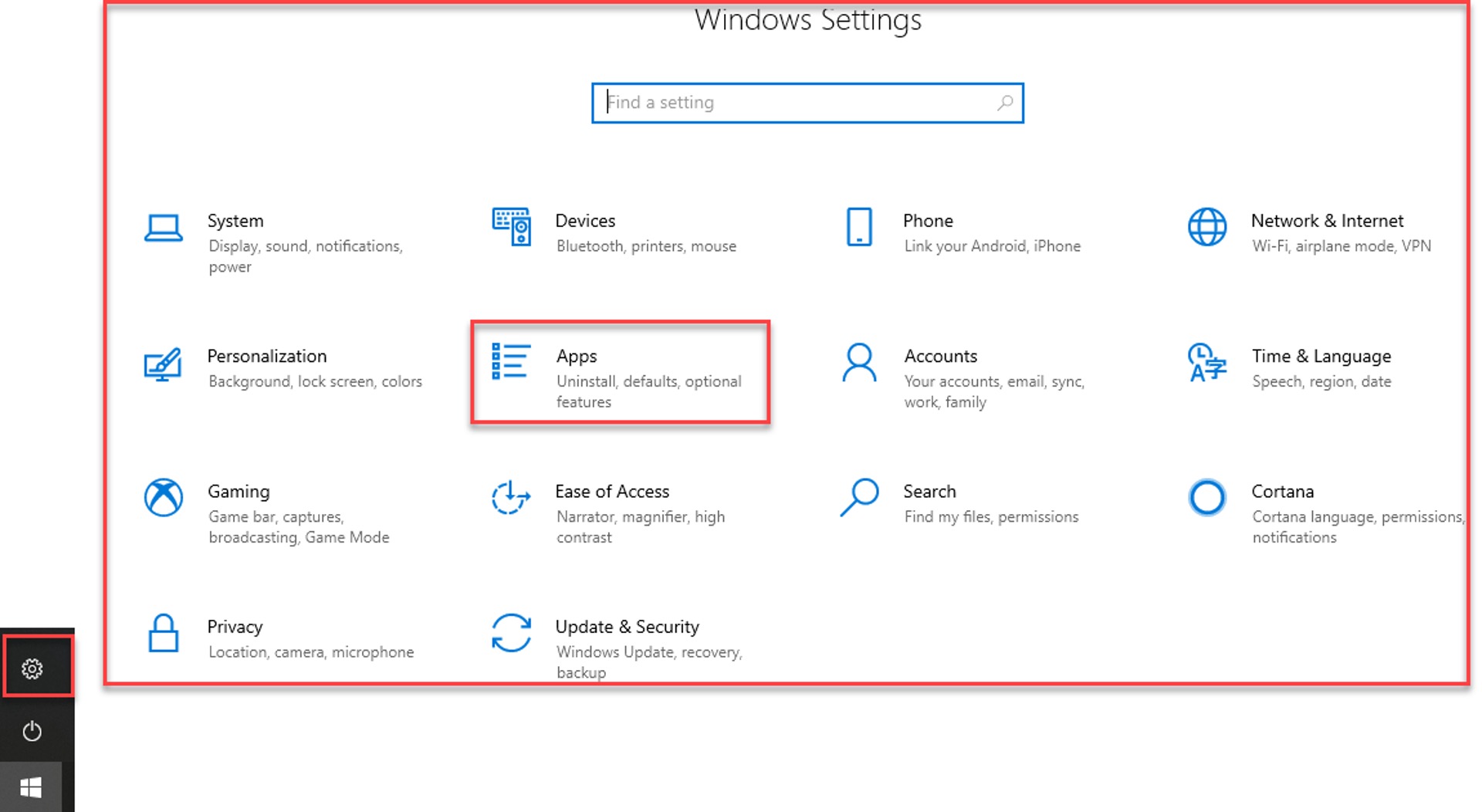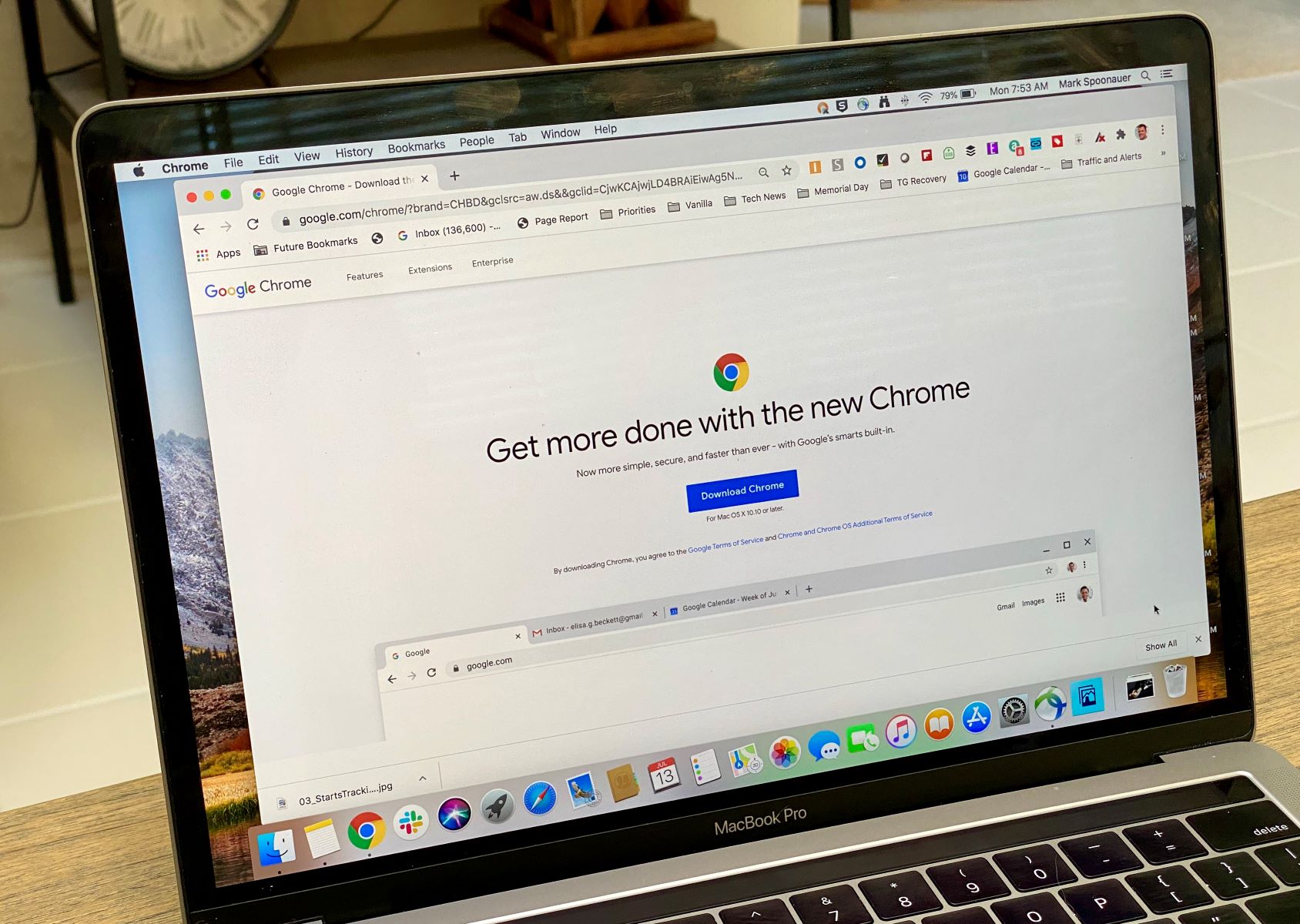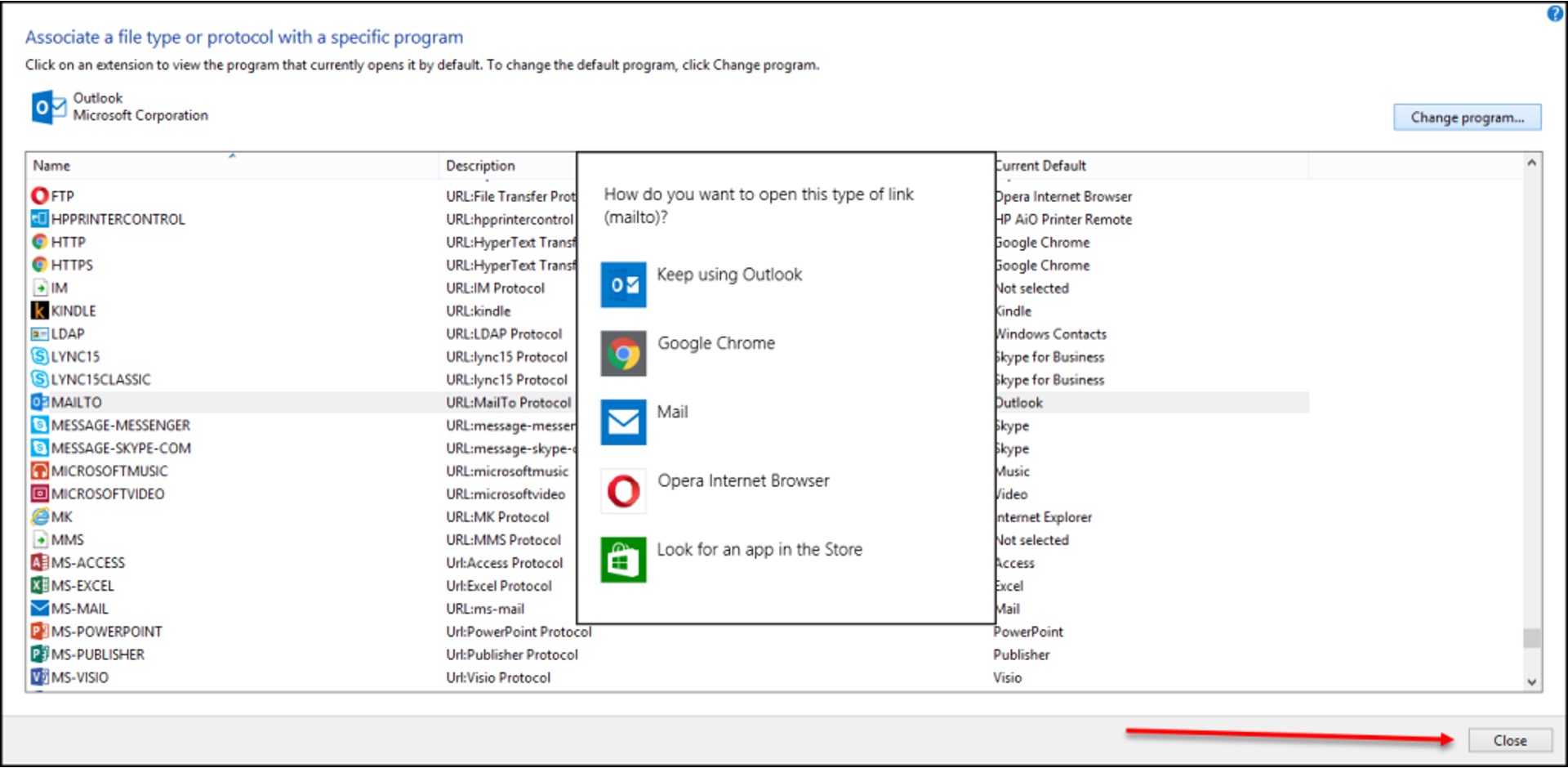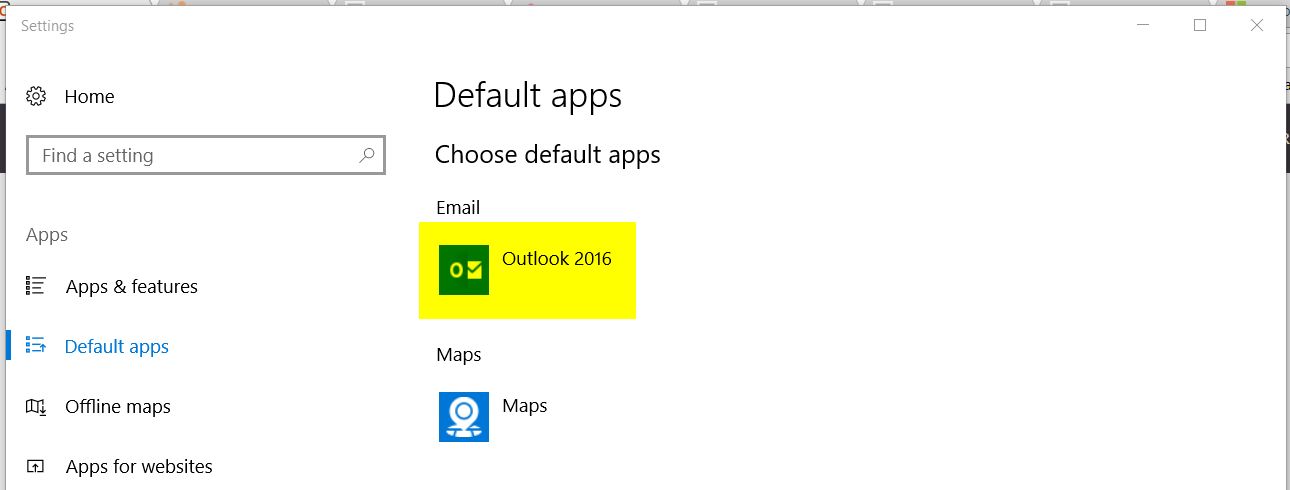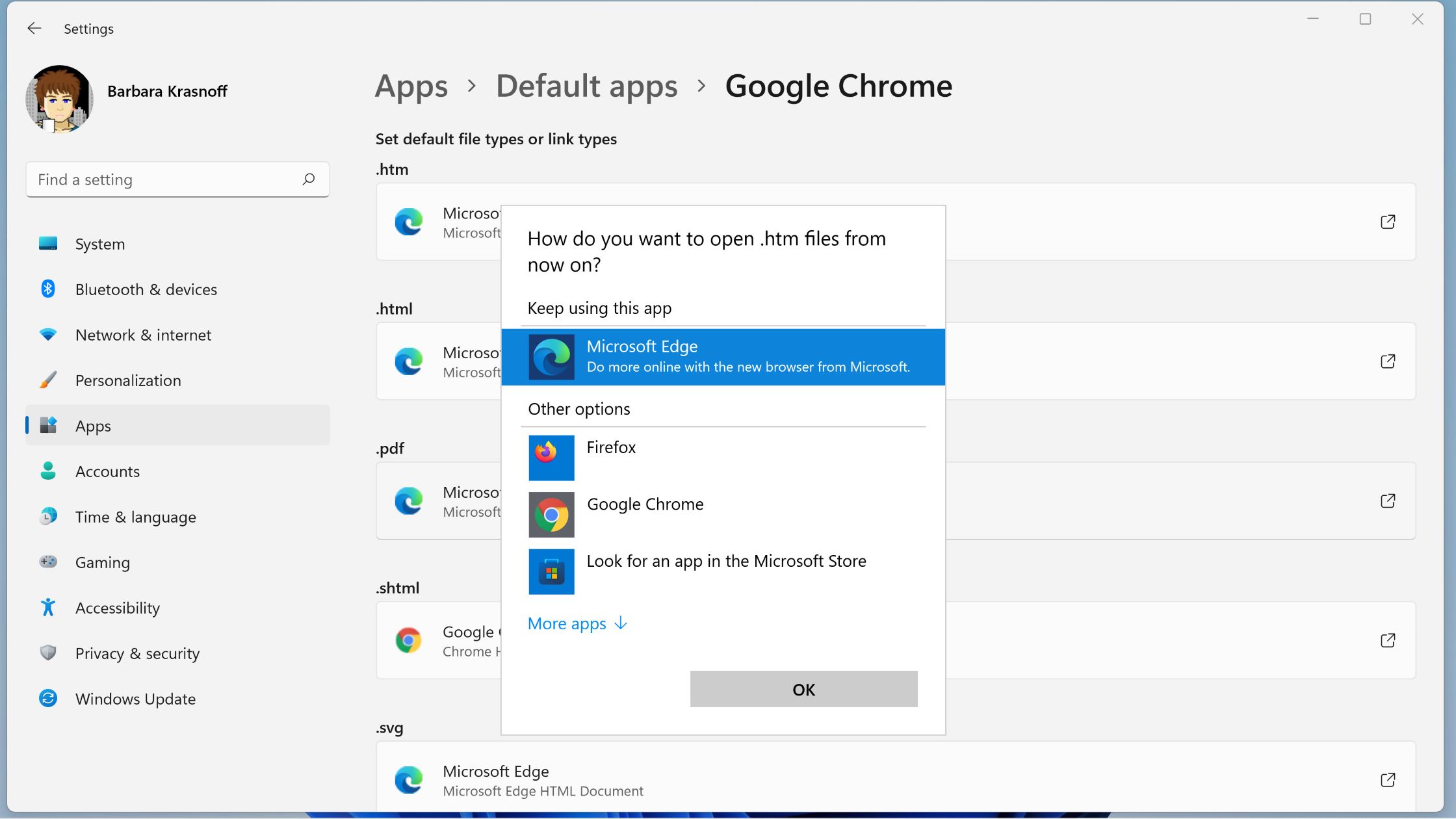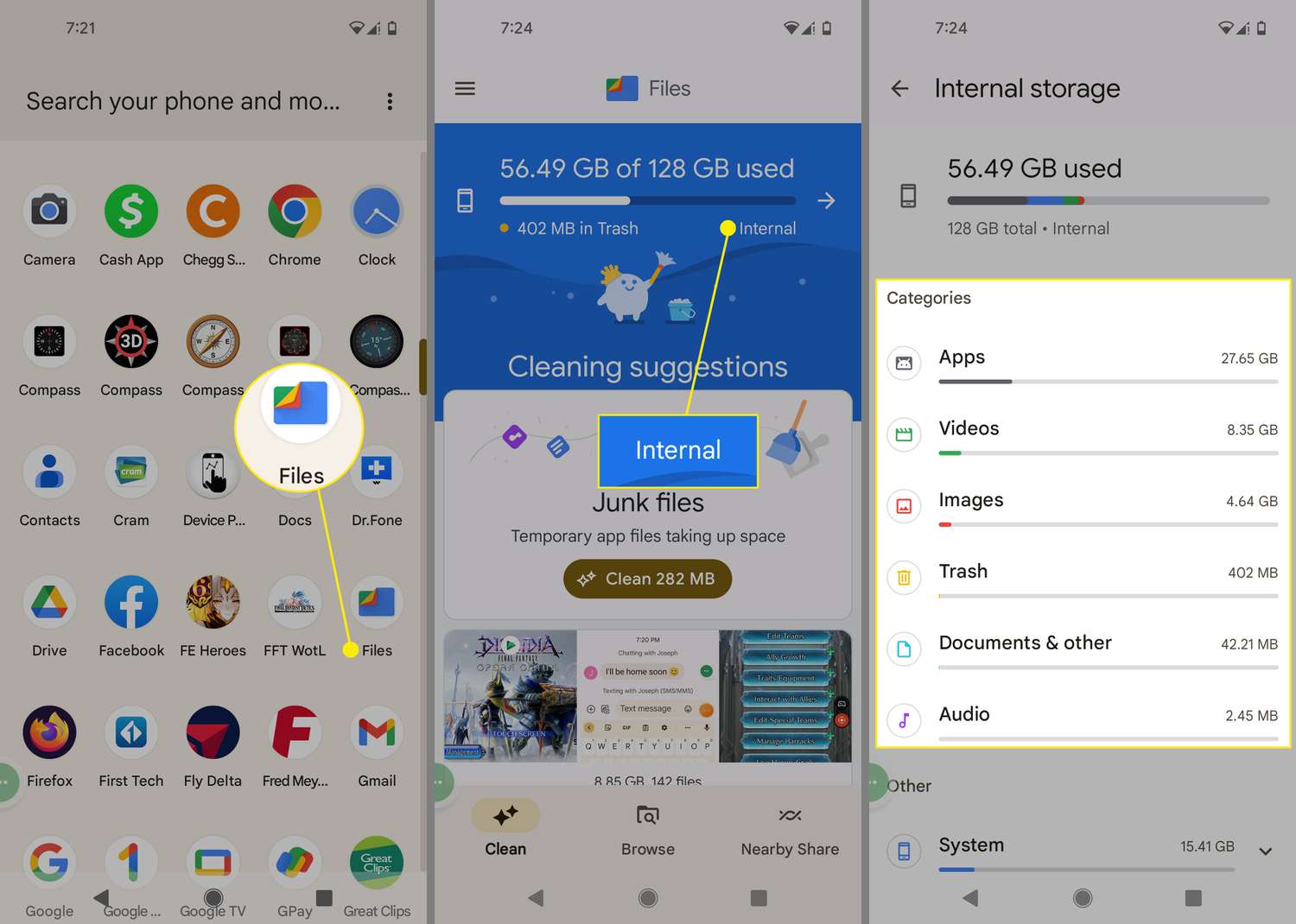Introduction
Google Chrome is one of the most popular web browsers, known for its user-friendly interface and a wide range of features. One of the convenient features of Chrome is its ability to remember and autofill your email address on various websites. However, there may be instances when you want to change the default email address that Chrome uses. This could be due to a change in your primary email account or simply a preference to use a different email address for specific websites.
In this article, we will guide you through the process of changing the default email address in Chrome. Whether you want to update your email for security reasons or simply to streamline your browsing experience, Chrome makes it easy to manage your email settings. By following the step-by-step instructions provided, you will be able to customize your email preferences and ensure that Chrome uses the correct email address for autofill and notifications on your favorite websites.
So, if you're ready to take control of your email settings in Chrome, let's dive into the simple yet effective process of changing the default email address. Whether you're a seasoned Chrome user or just getting started with this versatile browser, you'll find that managing your email preferences is a breeze with Chrome's intuitive interface and customizable settings.
Step 1: Open Chrome Settings
To begin the process of changing the default email address in Chrome, the first step is to access the browser's settings. Chrome provides a straightforward method to access its settings, allowing users to customize various aspects of their browsing experience. Here's how you can open Chrome settings:
-
Launch Google Chrome on your computer or laptop. You can easily identify the Chrome browser by its distinctive red, yellow, and green circular icon.
-
Once Chrome is open, look for the three vertical dots located in the top-right corner of the browser window. These dots represent the Chrome menu, which contains a range of options for managing your browsing settings and preferences.
-
Click on the three dots to open the Chrome menu. This action will reveal a dropdown menu with a variety of options, including "New tab," "New window," "History," "Downloads," and more.
-
Towards the bottom of the dropdown menu, you will find the "Settings" option. Click on "Settings" to access the main settings interface of Google Chrome.
-
Upon clicking "Settings," a new tab will open within the Chrome browser, displaying a range of customizable options and preferences. This tab serves as the central hub for managing Chrome's features, including privacy and security settings, appearance customization, and advanced configurations.
By following these simple steps, you can easily open the settings interface in Google Chrome, setting the stage for the subsequent steps to change the default email address. With the Chrome settings readily accessible, you are now prepared to proceed to the next step and continue the process of customizing your email preferences within the browser.
Stay tuned as we delve into the subsequent steps, guiding you through the seamless process of updating the default email address in Chrome to align with your current preferences and requirements.
Step 2: Click on "Advanced"
After accessing the main settings interface in Google Chrome, the next step in the process of changing the default email address involves navigating to the "Advanced" settings. The "Advanced" section in Chrome settings offers users a deeper level of control over various features and configurations, allowing for a more personalized browsing experience. Here's how you can proceed to the "Advanced" settings:
-
Once you have the Chrome settings tab open, you will notice a vertical navigation panel on the left-hand side of the screen. This panel contains a list of categories, including "Privacy and security," "Autofill," "Site settings," and more.
-
Scroll down the navigation panel until you locate the "Advanced" option. Clicking on "Advanced" will expand this section, revealing additional settings and options that are not available in the standard settings view.
-
Upon expanding the "Advanced" section, you will find a range of advanced settings related to privacy, security, accessibility, system configurations, and more. These settings allow users to fine-tune their browsing experience and customize Chrome to suit their specific needs and preferences.
By clicking on "Advanced," you gain access to a wealth of additional settings and controls that can enhance your browsing experience and provide greater control over how Chrome interacts with websites and web applications. This step is crucial in the process of changing the default email address, as it sets the stage for accessing the specific settings related to email preferences and notifications.
With the "Advanced" settings now accessible, you are well-positioned to proceed to the subsequent steps, where you will delve deeper into the specific configurations that enable you to update and customize the default email address used by Chrome. The intuitive layout of Chrome's settings interface ensures that users can navigate seamlessly through the various sections, empowering them to manage their browsing preferences with ease and efficiency.
Step 3: Find "Privacy and security" section
Once you have accessed the "Advanced" settings in Google Chrome, the next step is to locate the "Privacy and security" section within the settings interface. This section plays a pivotal role in managing various aspects of your browsing experience, including permissions, security protocols, and site-specific settings. Here's how you can easily find the "Privacy and security" section and proceed with customizing your email preferences:
-
Navigate to the Sidebar: Within the expanded "Advanced" settings, you will notice a vertical navigation panel on the left-hand side of the screen. This panel serves as a comprehensive guide to the different categories and configurations available in Chrome settings.
-
Scroll Down to "Privacy and Security": As you scroll through the navigation panel, you will come across the "Privacy and security" category. This category encompasses a range of settings related to site permissions, security protocols, and content controls, empowering users to manage their online privacy and security preferences effectively.
-
Click on "Privacy and Security": Once you have located the "Privacy and security" section, click on it to access the specific settings and options within this category. This action will expand the section, revealing a variety of configurations that enable you to fine-tune your browsing experience and enhance the security of your online interactions.
By finding the "Privacy and security" section within the Chrome settings, you are taking a significant step towards customizing your email preferences and ensuring that Chrome uses the correct default email address for autofill and notifications. The intuitive layout of the settings interface makes it easy for users to navigate through the various categories and access the specific configurations they need to manage their browsing experience effectively.
With the "Privacy and security" section now within reach, you are poised to proceed to the subsequent steps, where you will delve into the specific settings related to email preferences and notifications. This seamless progression through the settings interface underscores Chrome's commitment to user-friendly customization and empowers users to take control of their browsing preferences with ease and efficiency.
Step 4: Click on "Site settings"
After navigating to the "Privacy and security" section in Google Chrome's settings, the next crucial step in the process of changing the default email address involves accessing the "Site settings." This section is instrumental in managing site-specific preferences, including permissions, notifications, and content settings for individual websites. Here's a detailed guide on how to proceed with this essential step:
-
Locate the "Site settings" Option: Within the expanded "Privacy and security" category, you will find the "Site settings" option listed among the various configurations available. This option serves as the gateway to managing specific settings for individual websites, allowing users to customize their interactions and permissions based on site-specific requirements.
-
Click on "Site settings": Once you have located the "Site settings" option, click on it to access the dedicated settings interface. This action will open a new tab within the Chrome browser, presenting a comprehensive array of options for managing site-specific preferences, including notifications, permissions, and content settings.
-
Explore the Site Settings Interface: Upon accessing the "Site settings," you will be presented with a range of customizable options that enable you to tailor your browsing experience on a per-site basis. From controlling notifications and permissions to managing cookies and site data, the site settings interface empowers users to fine-tune their interactions with individual websites, ensuring a personalized and secure browsing experience.
By clicking on "Site settings," you gain access to a wealth of site-specific configurations that are pivotal in customizing your email preferences and notifications for different websites. This step sets the stage for the subsequent actions, where you will delve into the specific settings related to email addresses and notifications, enabling you to update the default email address used by Chrome for autofill and notifications on various websites.
With the "Site settings" now accessible, you are well-positioned to proceed to the subsequent steps, where you will navigate through the specific configurations that allow you to manage your email preferences effectively. The seamless progression through the settings interface underscores Chrome's commitment to user-friendly customization, empowering users to take control of their browsing preferences with ease and efficiency.
Step 5: Select "Notifications"
Once you have accessed the "Site settings" in Google Chrome, the next critical step in the process of changing the default email address involves selecting "Notifications." This step is pivotal in managing how Chrome handles notifications from specific websites, including email-related notifications. Here's a detailed guide on how to proceed with this essential step:
-
Locate the "Notifications" Section: Within the "Site settings" interface, you will find the "Notifications" section listed among the various site-specific configurations. This section allows users to control how websites can send notifications, including email notifications, ensuring a personalized and streamlined browsing experience.
-
Click on "Notifications": Once you have located the "Notifications" section, click on it to access the dedicated settings interface. This action will expand the section, revealing a range of options related to managing notifications from individual websites, including the ability to customize email-related notifications.
-
Explore the Notifications Interface: Upon accessing the "Notifications" settings, you will be presented with a variety of customizable options that enable you to tailor your notification preferences on a per-site basis. From controlling the display of notifications to managing email notifications, the interface empowers users to fine-tune their notification settings, ensuring a seamless and personalized browsing experience.
By selecting "Notifications," you gain access to a wealth of configurations that are pivotal in customizing your email preferences and notifications for different websites. This step sets the stage for the subsequent actions, where you will delve into the specific settings related to email addresses and notifications, enabling you to update the default email address used by Chrome for autofill and notifications on various websites.
With the "Notifications" section now accessible, you are well-positioned to proceed to the subsequent steps, where you will navigate through the specific configurations that allow you to manage your email preferences effectively. The seamless progression through the settings interface underscores Chrome's commitment to user-friendly customization, empowering users to take control of their browsing preferences with ease and efficiency.
Step 6: Find the website with the default email
After accessing the "Notifications" settings in Google Chrome, the next crucial step in the process of changing the default email address involves identifying the specific website for which you intend to update the email preferences. This step is instrumental in ensuring that Chrome uses the correct default email address for autofill and notifications on the selected website. Here's a detailed guide on how to proceed with this essential step:
-
Navigate to the Website: Begin by visiting the website for which you wish to update the default email address. Whether it's a frequently visited site or a platform where you receive important notifications, accessing the website is the first step in identifying the specific domain for which you want to customize your email preferences.
-
Observe the Email Field: Once you are on the website, pay attention to the email field where Chrome typically autofills your email address. This field is often found on login pages, subscription forms, or any other section where you are required to input your email address. By identifying the email field, you can confirm the website for which you need to update the default email address.
-
Review Notifications: Additionally, consider any notifications or prompts related to email interactions that you receive from the website. Whether it's subscription confirmations, account notifications, or communication alerts, these notifications can provide valuable cues to help you identify the website with the default email address.
-
Check Browser History: If you have previously interacted with the website and are unsure of the specific domain, you can review your browser history to identify the sites you have visited. Chrome's browsing history provides a comprehensive record of your online activities, allowing you to pinpoint the websites for which you need to update the default email address.
By finding the website with the default email address, you are taking a significant step towards customizing your email preferences and ensuring that Chrome uses the correct default email address for autofill and notifications on the selected website. This step sets the stage for the subsequent actions, where you will proceed to update the email address for the identified website, aligning it with your current preferences and requirements.
With the specific website now identified, you are well-positioned to proceed to the subsequent steps, where you will navigate through the specific configurations that allow you to manage your email preferences effectively. The seamless progression through the settings interface underscores Chrome's commitment to user-friendly customization, empowering users to take control of their browsing preferences with ease and efficiency.
Step 7: Change the email address
Once you have identified the website for which you need to update the default email address, the next crucial step is to proceed with changing the email address within Chrome's settings. This action ensures that the browser uses the correct email address for autofill and notifications on the specific website. Here's a detailed guide on how to proceed with this essential step:
-
Access Email Settings: After identifying the website, return to the Chrome browser settings tab where you accessed the "Site settings" and "Notifications" sections. Navigate back to the specific website's settings within Chrome to access the email preferences.
-
Locate Email Address: Within the website's settings, look for the email address that Chrome currently uses for autofill and notifications. This could be listed under the site-specific permissions or notifications settings, depending on the layout of the website's settings within Chrome.
-
Edit Email Address: Once you have located the email address, click on it to edit the existing email or input a new email address of your choice. Chrome allows you to directly modify the email address associated with a specific website, providing a seamless way to update your preferences.
-
Save Changes: After entering the new email address, ensure to save the changes within the website's settings. This action confirms the update and ensures that Chrome uses the newly specified email address for autofill and notifications on the selected website.
By changing the email address within Chrome's settings for the identified website, you are effectively customizing your email preferences and ensuring that the browser aligns with your current email requirements. This step empowers you to take control of the email address used for interactions on specific websites, providing a personalized and streamlined browsing experience tailored to your preferences.
With the email address successfully updated, you have effectively managed your email preferences within Chrome, ensuring that the browser uses the correct default email address for autofill and notifications on the selected website. This seamless customization process underscores Chrome's user-friendly interface, allowing users to effortlessly tailor their browsing experience to suit their individual needs and preferences.
Conclusion
In conclusion, the ability to change the default email address in Google Chrome offers users a valuable opportunity to customize their browsing experience and ensure that their preferred email address is used for autofill and notifications on specific websites. By following the step-by-step process outlined in this guide, users can seamlessly navigate through Chrome's settings interface and update their email preferences with ease and efficiency.
The intuitive layout of Chrome's settings interface, coupled with the site-specific configurations available in the "Site settings" and "Notifications" sections, empowers users to take control of their email interactions on individual websites. This level of customization not only enhances user convenience but also contributes to a more personalized and secure browsing experience.
Furthermore, the process of changing the default email address in Chrome underscores the browser's commitment to user-friendly customization, allowing individuals to tailor their browsing preferences to align with their current email requirements. Whether it's updating the email address for account logins, subscription forms, or communication notifications, Chrome's flexibility in managing email preferences ensures a seamless and efficient browsing experience for users.
By identifying the website with the default email address and proceeding to update the email settings within Chrome, users can effectively manage their email preferences and ensure that the browser uses the correct default email address for interactions on specific websites. This level of control not only streamlines the browsing experience but also contributes to enhanced security and privacy, as users can verify and manage their email interactions with precision.
In essence, the process of changing the default email address in Chrome reflects the browser's commitment to empowering users with customizable features that enhance their overall browsing experience. By leveraging the intuitive settings interface and site-specific configurations, users can effortlessly manage their email preferences, ensuring that Chrome aligns with their individual needs and preferences when it comes to email interactions on the web.







